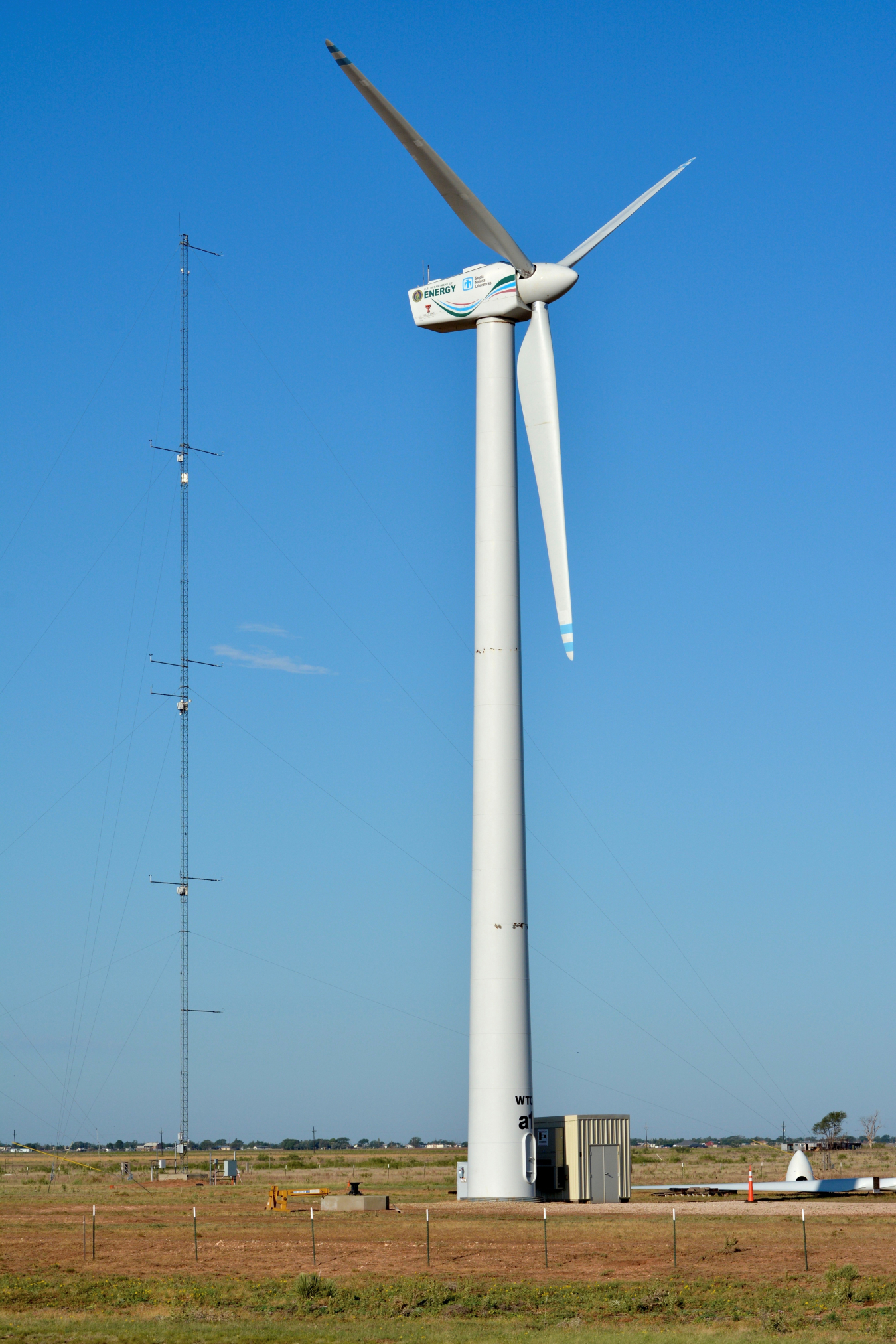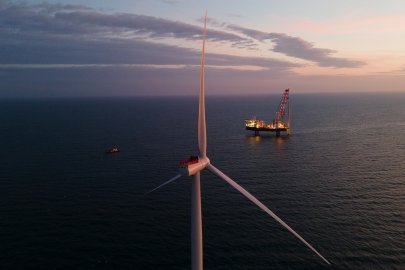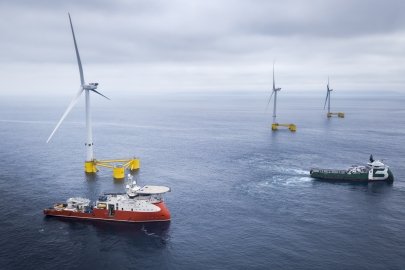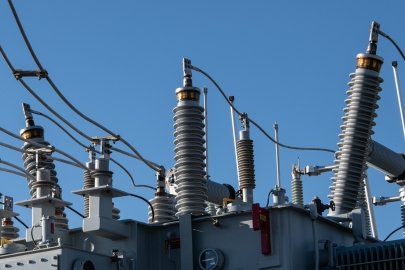The National Rotor Testbed is an open platform for testing new wind turbine technologies and collaborating among national laboratories to validate advanced computational models for wind turbines. The platform now includes wake control research.
Wind Energy Technologies Office
October 13, 2021National Rotor Testbed turbine will demonstrate new ways to lower energy costs using wake control approaches
Wakes—turbulent and complex air flows behind wind turbine rotors—cause wind to slow down through wind power plants, resulting in energy losses. Wakes also represent physical evidence of the power each wind turbine extracts from the air.
Wake dynamics can be simulated and studied with the new DOE computational fluid dynamics (CFD) code Nalu-Wind, which is part of the ExaWind tool suite. The challenge is that these codes require experimental data to validate the accuracy of their predictions. However, commercial wind turbine performance and experimental data are proprietary and not readily available for validation of new computational codes, especially for wake data.
The National Rotor Testbed (NRT), an open-source wind turbine designed at Sandia National Laboratories (Sandia) to study wind turbine wakes, solves this challenge by providing all design documentation to facilitate CFD code validation and collaboration among DOE laboratory researchers and academic research partners.
“The NRT wake control demonstration will enable a better understanding of how wind power plant operators can lower the LCOE using the tested wake control approaches, depending on different wind and electricity market conditions,” said Christopher Kelley, rotor wake lead for Sandia.
The NRT was 95% commissioned in 2021. Commissioning is the process of testing all the subsystems of the wind turbine prior to grid connection, full power production, and the start of a validation data field campaign. The team expects commissioning to be 100% complete by the end of 2021.
The NRT blades include research instrumentation that measures acceleration, strain, and temperature across the blade span. The blade data, in conjunction with wake measurements, will be used to validate DOE’s ExaWind tool suite, ensuring that it accurately simulates blade loads and the wake flow field for a variety of wind conditions.

The National Rotor Testbed turbine is designed to help wind power plant operators understand how they can lower energy costs using wake control approaches. Photo by Chris Kelley, Sandia National Laboratories
Using these simulation tools, the Sandia research team is investigating how wind turbine wakes can be controlled within a wind power plant for different plant operator objectives— maximizing total power extraction, increasing blade lifetime, and offering grid ancillary services, such as grid frequency control. Alternative modes of operation provide a more flexible and customizable way for a wind power plant owner and operator to lower costs for an existing wind plant depending on electricity market conditions. These operational modes include:
- Yaw steering—deflecting wakes laterally so that they do not impact downstream wind turbines at the cost of greater fatigue damage
- Induction control—steadily reducing turbine power at the front of a wind plant so that downstream turbines produce more power
- Active wake mixing—dynamically changing turbine power at the front of a wind plant so that downstream turbines produce more power.
These methods will be evaluated experimentally to better understand which techniques best reduce the cost of energy.
NRT Commissioning Phases
After all components were installed, the NRT underwent commissioning—a process that ensured all systems were safe and operational. Commissioning of the NRT happened in phases:
- Phase I—showed that the wind turbine nacelle subsystems’ yaw, pitch, and brakes operated safely and normally before the energy source, the NRT, was lifted and installed on the drive shaft.
- Phase II—showed that the yaw, pitch, and brakes functioned normally after the NRT was installed.
- Phase III—demonstrated the pitch system to control the rotor speed with good dynamic response.
- Phase IV—brought the wind turbine up to a fully operational state, spinning and producing power while connected to the grid.
After completing commissioning, the NRT began to collect data for wake validation of DOE wind turbine simulation codes.
The NRT will be used to demonstrate induction control and active wake mixing. Sandia will deploy a lidar on the NRT nacelle to measure the wake position and strength downstream of the wind turbine. Sandia will analyze these experimental data to validate the effect on a downstream turbine’s power and loads as predicted from the CFD models. The results of the NRT experiment will show new ways of operating wind power plants to reduce the LCOE for varying electricity market conditions.
“Initial simulations of active wake mixing showed 6% increases in power production of two wind turbines operating near each other. This kind of power increase for closely spaced turbines has significant impacts to reducing LCOE and shows a way of reducing the geographic footprint of wind energy onshore and offshore,” Kelley said. “The NRT experiment will validate this increase of power in a field experiment and make recommendations on when to use different wake control strategies.”
The NRT is an open platform for testing new wind turbine technologies and collaborating among the national laboratories to validate advanced computational models for wind turbines. The turbine and instrumentation are well-suited to study wind turbine wakes and advanced wake controllers.
“Now that the NRT is commissioned and producing electricity, the team would like to develop new research partners, including blade manufacturers and wind farm owners and operators,” Kelley said. “This will help increase the impact of wake control techniques on the deployment of commercial wind turbines.”
For more information, visit the GitHub repository.
Subscribe to learn more about WETO R&D projects, news, accomplishments, and recent publications.
Subscribe to the WETO e-newsletter to stay informed on the latest wind energy news, events, publications, and updates.








